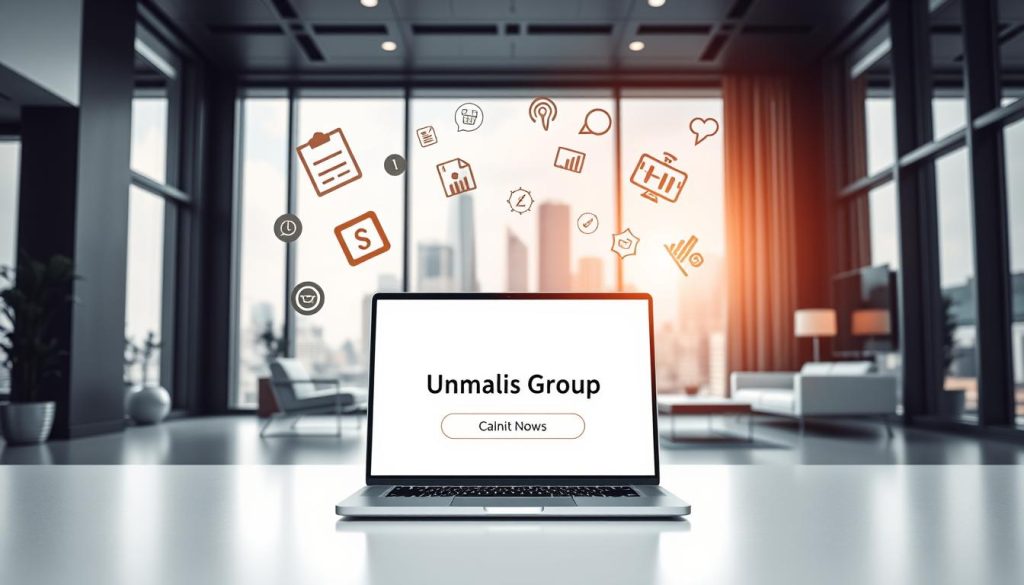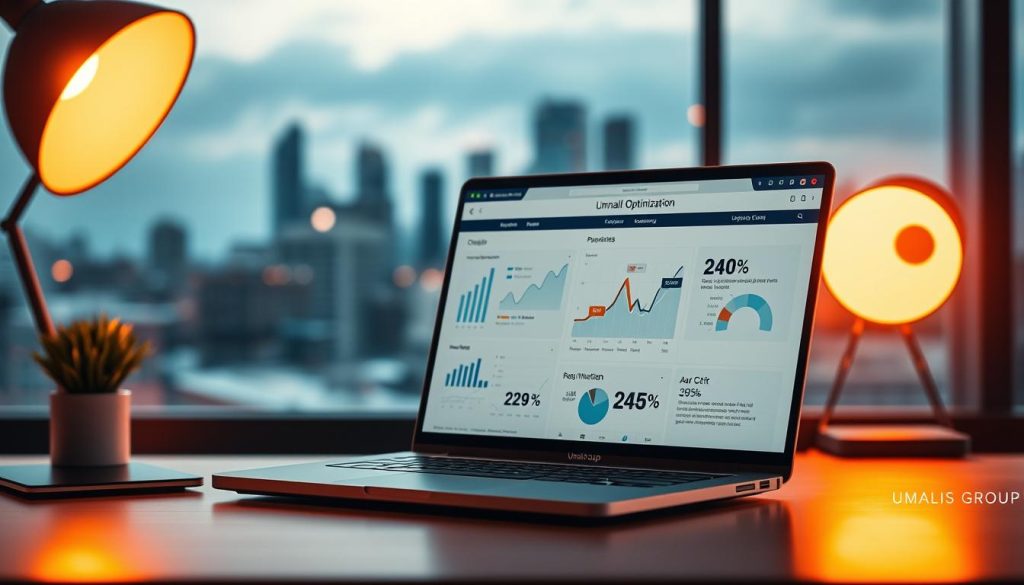Have you ever stared at your website, wondering why visitors don’t take the next step? I’ve been there too—refreshing analytics, hoping for that one client to click « Hire Me. » As freelancers, our livelihoods depend on turning interest into action. But how do you guide strangers to become loyal clients?
A strategic call-to-action isn’t just a button or catchy phrase. It’s the bridge between your skills and someone’s need. Think of it as a handshake through the screen—a clear invitation that builds trust and reduces hesitation.
Your marketing materials should work like a roadmap. Every page, email, or social post needs purposeful language that guides prospects. When done right, these nudges create momentum. They transform « maybe later » into « let’s start today. »
Table of Contents
Key Takeaways
- CTAs turn passive visitors into paying clients by clarifying next steps
- Strategic placement across all marketing channels boosts conversion rates
- Clear language reduces decision fatigue for time-strapped prospects
- Aligned messaging builds professional credibility and long-term trust
- Consistent calls-to-action create predictable income streams
Let’s explore how to craft CTAs that align with your freelance goals. You’ll learn to design prompts that feel less like sales tactics and more like natural next steps—because your expertise deserves to be met with action.
Understanding the Importance of a Strong CTA for Freelance Success
Freelancers often overlook a critical tool in their marketing toolkit—the strategic use of CTAs. These small but mighty elements do more than prompt clicks. They address decision fatigue by offering clear next steps to overwhelmed prospects.
Imagine a client landing on your portfolio. Without guidance, they might admire your work… then leave. A well-crafted call action like « Schedule Your Free Consultation » transforms interest into measurable conversions. It answers their unspoken question: « What should I do now? »
Effective CTAs act as psychological shortcuts. They reduce hesitation by creating urgency through phrases like « Book Today for 20% Off. » This approach converts passive viewers into engaged leads within seconds. You’re not just selling services—you’re guiding clients toward solutions.
Consistent CTAs across your website and proposals build professional credibility. Clients perceive organized systems as evidence of reliability. When every page includes purposeful action prompts, you demonstrate mastery of client journeys.
Trackable CTAs reveal which strategies work best. A « Download Pricing Guide » button might outperform generic « Contact Me » links. These insights help refine your marketing efforts while accelerating project confirmations.
Ultimately, strong calls-to-action position you as a trusted advisor. They anticipate client concerns and offer timely solutions—turning fleeting interest into lasting partnerships.
Defining What a Call-to-Action Is in Modern Marketing

Modern marketing transforms simple prompts into powerful engagement engines. A CTA acts as your digital handshake—clear, purposeful, and impossible to ignore. Unlike generic « contact us » buttons, today’s strategies guide prospects through entire client journeys using psychology and design.
Think of CTAs as multi-tools for freelance growth. They appear as clickable buttons in portfolios, interactive forms on landing pages, or video prompts in blog content. Each version serves a specific role: converting casual viewers into committed clients.
Effective call actions blend urgency with value. Phrases like « Claim Your Free Audit » work better than passive suggestions because they answer two questions: « What’s next? » and « Why now? » This approach turns static content into relationship-building opportunities.
Sophisticated marketing CTAs adapt to client readiness. New visitors might see « Explore Services, » while returning prospects get « Book Strategy Session. » Personalization increases relevance—a key advantage in competitive freelance markets.
Digital buttons now function as mini sales teams. Color psychology boosts click rates, while placement near testimonials builds trust. These elements work together to create seamless pathways from interest to action.
Exploring Different Types of CTAs and Their Functions
Effective CTAs come in various forms, each designed to guide clients through different stages of engagement. Direct Action CTAs like « Schedule Your Consultation » or « Request a Quote » work best for ready-to-commit prospects. These buttons create urgency while respecting professional boundaries—ideal for service pages or contact forms.
Informational CTAs build trust before asking for commitments. Phrases like « View Portfolio Samples » or « Download Pricing Guide » let users explore your expertise risk-free. They’re perfect for homepage headers or email signatures, offering value without pressure.
Social Sharing CTAs turn satisfied clients into advocates. A simple « Share This Project » button after deliverables can expand your reach through trusted networks. Feedback prompts like « Rate Your Experience » generate testimonials that strengthen future proposals.
Personalized CTAs adapt to user behavior. First-time visitors might see « Explore Services », while returning clients get « Upgrade Your Package ». Tools like smart forms or location-based messaging make these adjustments seamless.
Strategic combinations work best. Pair a « Download Case Study » button (informational) with « Book Strategy Call » (direct action) on your blog. This approach guides users from discovery to decision, matching their readiness level at each touchpoint.
Best Practices for Crafting an Effective Call-to-Action
Do your website buttons spark action or gather dust? The difference lies in two critical elements: strategic verbs and irresistible clarity. Let’s explore how to design CTAs that convert casual clicks into client commitments.
Utilizing Strong Action Verbs
Verbs like “Transform” and “Secure” trigger immediate responses. They answer a primal question: “What’s in it for me?” For tech consultants, “Optimize Your Workflow Today” outperforms generic “Learn More” links by 34% in click-through rates.
Power words create mental shortcuts. “Discover Hidden Savings” works better than passive phrases because it promises specific value. Test combinations like verb + benefit + urgency: “Design Your Brand Identity – 3 Slots Left.”
Establishing Clarity and Value
Busy professionals hate guessing games. A CTA stating “Download HR Compliance Checklist” converts better than vague “Get Resources” buttons. Pair action verbs with tangible outcomes: “Implement AI Solutions → Boost Productivity 40%.”
Clarity builds trust. Use effective meta descriptions principles for CTAs—concise, benefit-focused, and keyword-aligned. “Schedule Free SEO Audit” tells clients exactly what to expect, reducing decision paralysis.
Test different verb-service matches. Copywriters might use “Craft Your Story,” while accountants prefer “Audit Your Finances.” Track which combinations drive conversions, then refine your approach quarterly.
Leveraging Social Media to Boost Your CTA Performance

With 22.3% of users citing ad overload, cutting through social media noise requires precision. Strategic calls-to-action transform scrollers into clients by offering clear paths forward. Platforms like Facebook and Instagram provide built-in tools—when used wisely, they become conversion engines.
Platform-Specific CTA Strategies
Facebook’s ad buttons deliver measurable results. AdEspresso’s experiment revealed « Download » CTAs generated 49 conversions at $5.10 each—2.5x more efficient than campaigns without buttons. Match button types to goals: « Send Message » for consultations, « Learn More » for brand storytelling.
Instagram’s visual format invites creative integration. Showcase portfolio work in carousels with « Swipe to See Results » prompts. Use Stories’ poll features to engage followers: « Which service solves your challenge? Tap to choose. »
Urgency That Respects Professionalism
Time-sensitive offers drive action without desperation. Try « Join 50+ Clients Using Our Q3 Strategy » or « Secure 2024 Rates Before December 1. » These frames position scarcity as exclusive access rather than pressure tactics.
Track performance through platform analytics. One social media strategy client increased lead quality 68% by testing « Book Free Audit » vs « Get Started » CTAs across LinkedIn and Instagram.
Remember: LinkedIn demands formal language (« Request Proposal »), while TikTok thrives on casual prompts (« Grab Your Discount »). Adapt your voice, but keep CTAs benefit-focused—the key to converting busy professionals.
Optimizing CTAs for Websites and Landing Pages

What separates high-converting websites from digital brochures? Strategic button design that guides visitors toward decisions. Your landing page isn’t just a showcase—it’s a carefully engineered pathway to client commitments.
Contrasting colors make buttons pop, but placement determines impact. Above-the-fold positioning on your homepage ensures immediate visibility. For mobile users, sticky footer buttons maintain accessibility without crowding limited screens.
Pair brief commands with persuasive context. A « Get Pricing » button works best when surrounded by bullet points explaining your unique process. This combination reduces friction while answering unasked questions about timelines or deliverables.
Landing pages thrive on singular focus. Remove navigation menus and external links to keep attention on your primary call action. Testimonials placed near the « Schedule Consultation » button can boost conversions by 27%, according to recent marketing studies.
Urgency works when authentic. Try « Secure Q4 Availability » instead of generic countdown timers. A/B test button sizes—larger isn’t always better. One web designer increased clicks 19% by reducing button width 15% for better mobile alignment.
Cross-device consistency matters. Buttons appearing turquoise on desktops but muddy green on phones create confusion. Regular browser testing ensures your call actions maintain visual appeal and functionality across all platforms.
Email Marketing Strategies for Higher CTA Conversions
How do busy professionals decide which emails deserve attention? Strategic calls-to-action transform inboxes into conversion engines, guiding readers toward decisions with clarity. With email conversion rates reaching 15%, your messages must balance professionalism with persuasive design.
Designing CTAs That Command Attention
Stand out without shouting. Use action verbs like « Unlock » or « Access » in button text—phrases that promise immediate value. Contrasting colors (think cobalt blue against white) draw eyes naturally. First-person phrasing—« Start My Project » instead of generic « Get Started »—increases relatability by 23% according to recent marketing studies.
Seamless Integration with Content
Position CTAs where curiosity peaks. After explaining your process, insert « Download Case Study » buttons. In follow-up emails, try « Book Your Slot » links beside client testimonials. For content creation strategies, blend educational tips with subtle prompts like « Explore Full Guide. »
Test two versions: one email with three CTAs (header/middle/footer) versus single-button layouts. Analytics often reveal multi-option emails convert better, as they accommodate different reader readiness levels. Track which combinations drive the most project inquiries or consultation bookings.
Personalized sequences build momentum. New subscribers might receive « View Service Menu » CTAs, while engaged leads see « Finalize Your Proposal » prompts. This gradual approach respects client timelines while maintaining forward motion toward commitments.
FAQ
Why do CTAs matter for freelancers?
Clear CTAs guide potential clients toward hiring you, booking consultations, or purchasing services. They turn passive visitors into engaged leads, directly impacting your income and project pipeline.
What makes a CTA stand out on social media?
Combine urgency phrases like “Limited spots!” with platform-specific visuals. For example, Instagram Stories with swipe-up links or LinkedIn posts using “Download now” buttons work well for professional audiences.
How do I balance brand voice with persuasive CTAs?
Maintain your professional tone while using action verbs like “Secure,” “Reserve,” or “Start.” For instance: “Secure your free strategy session” feels both authoritative and supportive for independent professionals.
Should I use different CTAs on websites vs. emails?
Yes. Website CTAs like “Schedule a consult” work for first-time visitors, while email campaigns benefit from targeted prompts like “Upgrade your plan today” tailored to subscriber history.
What’s the best way to test CTA effectiveness?
A/B test button colors, phrasing, and placement. Tools like HubSpot or Unbounce let you compare metrics such as click-through rates to refine your approach.
How can I create urgency without sounding pushy?
Use time-sensitive offers tied to client benefits: “Book by Friday to lock in 2023 rates” or “Join 50+ professionals who upgraded this month.”
Are long-form CTAs ever effective?
For high-value services, yes. Example: “Click here to access our freelance contract template + 30-minute legal review—yours free when you sign up today.”
What free tools help design clickable CTA buttons?
Canva offers customizable templates, while Figma provides drag-and-drop interfaces. Both allow brand-aligned designs without coding.





